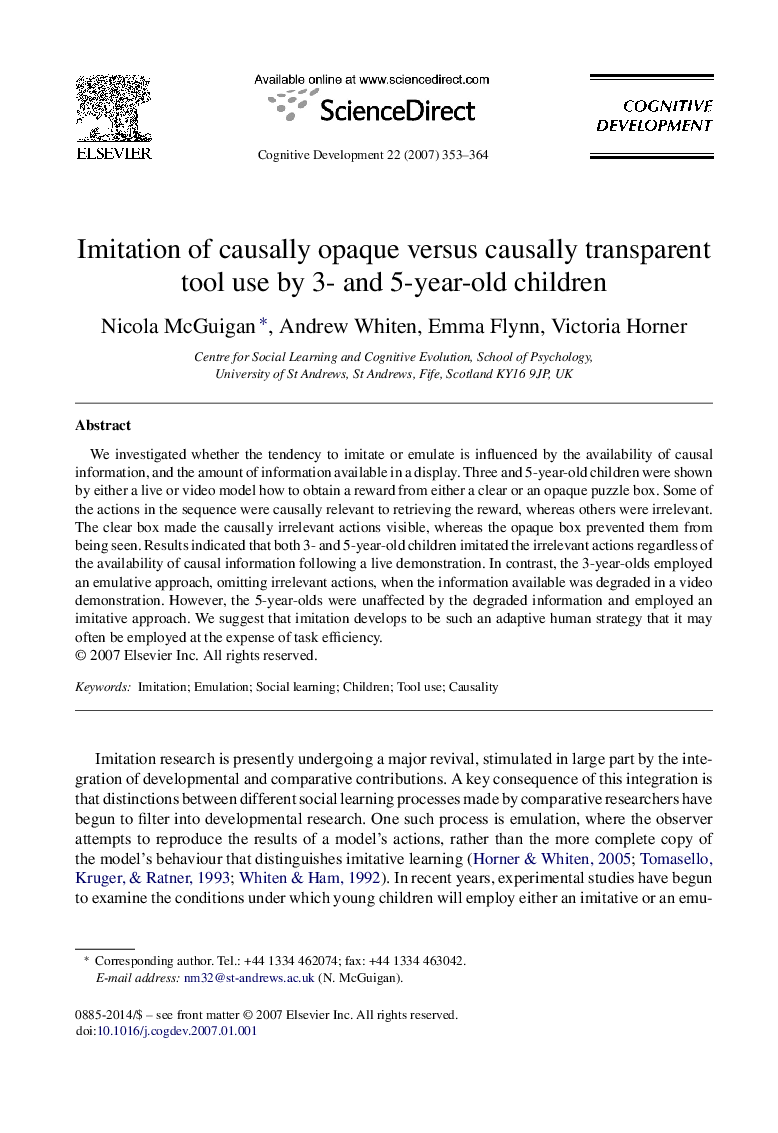| کد مقاله | کد نشریه | سال انتشار | مقاله انگلیسی | نسخه تمام متن |
|---|---|---|---|---|
| 916748 | 918884 | 2007 | 12 صفحه PDF | دانلود رایگان |

We investigated whether the tendency to imitate or emulate is influenced by the availability of causal information, and the amount of information available in a display. Three and 5-year-old children were shown by either a live or video model how to obtain a reward from either a clear or an opaque puzzle box. Some of the actions in the sequence were causally relevant to retrieving the reward, whereas others were irrelevant. The clear box made the causally irrelevant actions visible, whereas the opaque box prevented them from being seen. Results indicated that both 3- and 5-year-old children imitated the irrelevant actions regardless of the availability of causal information following a live demonstration. In contrast, the 3-year-olds employed an emulative approach, omitting irrelevant actions, when the information available was degraded in a video demonstration. However, the 5-year-olds were unaffected by the degraded information and employed an imitative approach. We suggest that imitation develops to be such an adaptive human strategy that it may often be employed at the expense of task efficiency.
Journal: Cognitive Development - Volume 22, Issue 3, July–September 2007, Pages 353–364